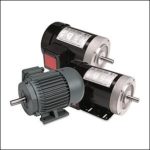Whole body vibration training DOs and DON’Ts
To stay safe and avoid injuries while exercising on your Hypervibe whole body vibration machine, you should get familiar with the rules of WBV or the DOs and DON’Ts of this form of training.
For a beginner, vibration workouts may seem unsafe because of the high intensity vibration waves that are sent throughout the body, but research has confirmed the safety and effectiveness of WBV when used for therapy or for training purposes. In today’s article, we’ll discuss 5 rules that will help you get fitter and stronger with vibration exercises while keeping the risk of injuries at a minimum.
1. DO check out the contraindications
Like any other fitness machine, a Hypervibe vibration plate may not be safe for certain categories of users, such as people with recent metallic implants, those with recent fractures, people with acute inflammatory conditions or patients with kidney stones or epilepsy.
These conditions represent general contraindications for vibration workouts, so regardless of the brand of WBV platform you choose, you should ask for your physician’s advice before engaging in a vibration training program if you suffer from any of the mentioned conditions.
Also, make sure to ask for your physician’s advice if you’re pregnant and planning to use a vibration plate for exercise, massage or lymphatic drainage. At the moment there isn’t enough research to support the use of vibration platform therapy or training in pregnant women, so we don’t encourage you to do WBV exercises if you are expecting a baby.
2. DO keep the WBV workouts short and intense
One of the elements that differentiates whole body vibration exercises from occupational WBV is the reduced duration of the training sessions. Ideally, a vibration workout shouldn’t last for more than 10-15 minutes in a row, so if you want to exercise for more than 15 minutes, you should take frequent breaks.
WBV workouts are designed to be short and intense; for massage and for increasing circulation or lymphatic drainage, you can use a lower frequency (6-10Hz), but for training purposes, you can increase the frequency to 20-25Hz or even higher, depending on the machine’s capability.
As you can imagine, exercising at this intensity for too long can have the same effects as occupational WBV. Also, frequencies that exceed 45Hz can lead to unwanted effects such as muscle soreness and cramps, hematoma, unhealthy stress levels on the spine, and high levels of head vibration. It’s therefore recommended to exercise at 6-45 Hz, for 10-15 minutes, taking a short break every other minute.
3. DON’T increase frequency too much if you’re a beginner
Being fit and able to lift heavy weights or to do intense cardio or HIIT workouts doesn’t always mean you’re prepared for WBV exercises at 20Hz. If you’re new to this form of training, do not increase the frequency too much during your first sessions, as it may result in injuries. Take it step by step, start at lower frequencies and exercise at lower intensities until your body gets used to this type of activity.
Whole body vibration can be very challenging and demanding, so it’s not wise to increase the frequency from the first workouts just to prove you can tolerate high vibration levels. Opt for intermittent workouts and rest periods that match your fitness level. If you want to make the exercises more intense, increase the amplitude, not the frequency.
As a general rule, you should know your limits and shouldn’t push yourself too hard at the beginning. Try not to work beyond your capacity no matter how strong or fit you are, and stop immediately if you experience any pain. If you’re too tired for a long or intense workout, adjust the frequency and amplitude as needed to stay safe.
4. DO exercise in a standing position
As a beginner, you should exercise in a standing position most of the times, as this keeps the level of head vibration at a minimum and allows the maximum amount of joint and muscle movement for your body to efficiently absorb the vibration. Exercising in a standing position allows you to target multiple groups of muscles simultaneously and to practice compound exercises that work your body more efficiently.
Also, it’s safer for your spine, especially if you’re just starting with vibration workouts. However, if you feel uncomfortable during the workout or feel excessive amounts of head vibration, and experience dizziness or headaches, you should stop and adjust your position.
The amount of vibration transferred to your body can be decreased by adding a small, non-slip mat to the top of the platform, and the level of head vibration can be minimized by keeping the knees slightly bent while exercising in a standing position. Also, you can reduce the intensity of your WBV workouts by bringing your feet closer to the machine’s center, as this reduces the amplitude.
5. DO use an exercise mat to prevent slipping
People who weigh less and those with balance problems may find it challenging to maintain stability while exercising at high intensities, and are more likely to slip off the platform if they don’t pay attention and don’t keep their hands on the machine’s handles.
To prevent injuries while doing balance exercises, it’s recommended to use a rubber bottom or exercise mat to prevent slipping, to keep your hands on the handles or use a chair for additional stability. If you use additional dumbbells, start with light weights to avoid accidents, and make sure your feet are stable on the platform.
Keep your eyes open during the routine and avoid upper body exercises that require you to keep your head to close to the platform, as these may result in dizziness, especially if you suffer from balance problems, oscillating blood sugar levels or inner ear conditions.
If you have questions, feel free to post them below or join our Facebook community and share your thoughts with us there!






